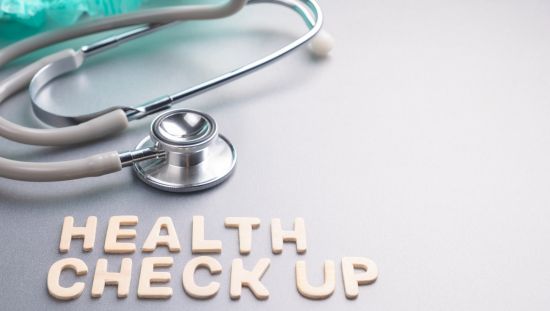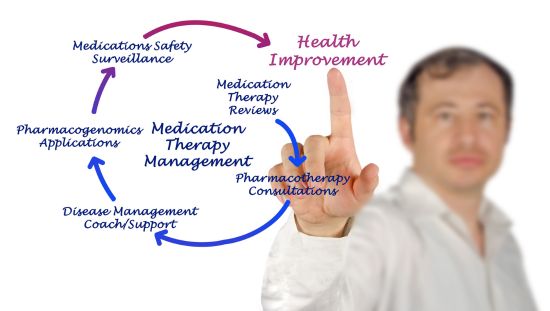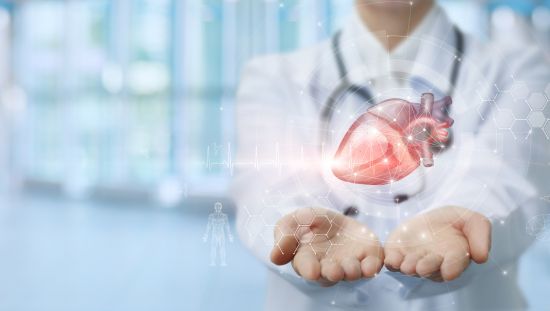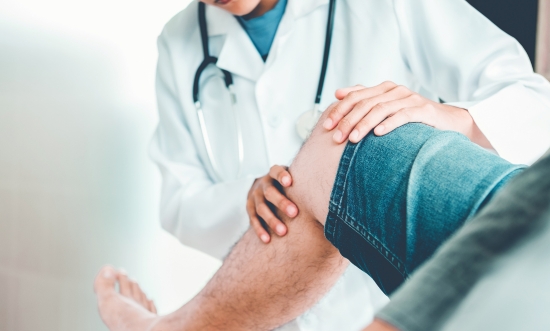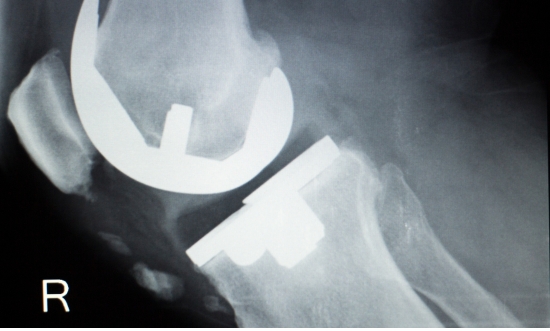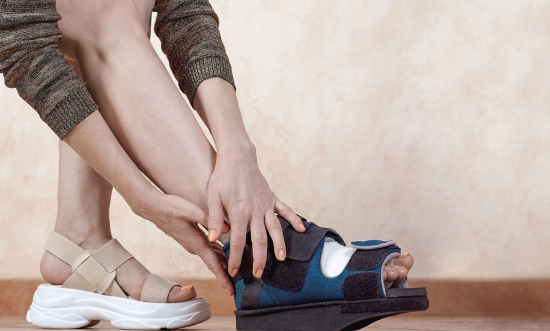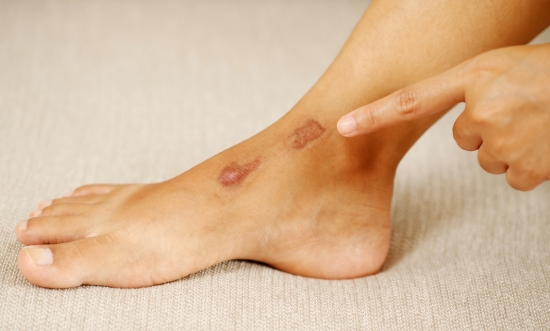Our Best Services
Our Service Departments
Special OPD facility for Gynecology and Pediatrics
Gynecology OPD:
- Women's health check-ups
- Prenatal and postnatal care
- Child health check-ups
- Common pediatric illness care
24x7 Testing of all blood types
Shree Radhakrishna Multi Specialty Hospital offers 24x7 testing services for all blood types. This service ensures quick and accessible blood ... testing whenever needed, catering to a wide range of medical requirements. For further information or specific details about their blood testing services, it's recommended to visit the hospital's official website or contact them directly.
Any type of operation facility is available.
Yes, Shree Radhakrishna Multi Specialty Hospital provides a comprehensive range of surgical services and operation facilities.... They likely offer various types of surgical procedures to address different medical needs. To get specific details about the types of surgeries they perform, the surgical facilities available, and any associated information, I recommend visiting the hospital's official website or reaching out to them directly.
Charitable OPD facility from 8:30 am to 10:30 am
Shree Radhakrishna Multi Specialty Hospital offers a charitable OPD facility during specific hours, from 8:30 am to 10:30 am. ...This service provides medical consultations and care to patients in need on a charitable basis, reflecting the hospital's commitment to community health and welfare. For further information about this charitable OPD facility, including the services provided and eligibility criteria, I recommend visiting the hospital's official website or contacting them directly.
Piles Operation Hydrocele Operation Stone Operation
Shree Radhakrishna Multi Specialty Hospital provides surgical services for a range of
medical conditions, including:...
Piles (Hemorrhoids) Operation: The hospital offers surgical procedures to treat
hemorrhoids, which are swollen blood vessels in the rectum or anus. Surgical options
might include hemorrhoidectomy, rubber band ligation, or other minimally invasive
techniques.
Hydrocele Operation: Surgical intervention for hydrocele, a condition where
fluid accumulates around the testicles, may be available. The hospital's urology
department likely provides diagnosis and treatment options for this condition.
Stone Operation: Surgical procedures for the removal of urinary tract stones
might be offered. Depending on the size and location of the stone, treatments could
include minimally invasive techniques like lithotripsy or more traditional surgical
removal.
General OPD Facility
Shree Radhakrishna Multi Specialty Hospital provides a General OPD (Outpatient Department) facility for patients seeking medical consultations and care for various health concerns. ... In a General OPD, patients can receive non-emergency medical evaluations, diagnoses, and treatment recommendations from qualified medical professionals. This service covers a wide range of health issues and conditions. For specific details about the General OPD services, including operating hours, available medical specialties, and appointment procedures, I recommend visiting the hospital's official website or contacting them directly.
Health Check-ups
- Comprehensive Examination:A thorough physical examination to assess your overall health status.
- Vital Signs Assessment:Measurement of vital signs such as blood pressure, heart rate, respiratory rate, and temperature.
- Medical History Review:Discussion about your medical history, current medications, allergies, and any existing health conditions.
- Blood Tests:Basic blood tests to assess your blood sugar levels, cholesterol levels, and other important indicators.
- Urinalysis:Examination of urine to identify potential kidney or urinary tract issues.
- BMI Calculation:Calculation of your Body Mass Index to evaluate your weight and potential health risks.
- Screening Tests:Depending on your age and risk factors, the physician might recommend specific screening tests such as cancer screenings or bone density tests.
Diagnosis and Treatment:
Diagnosis and treatment are fundamental aspects of medical care that involve identifying a health condition and providing appropriate medical interventions. Here's a breakdown of these two components: ...
Diagnosis:
Diagnosis is the process of determining the nature and cause of a person's health issue. It involves gathering information through various means, including medical history, physical examinations, laboratory tests, imaging studies, and more. The goal of diagnosis is to accurately identify the underlying condition or disease that is causing the person's symptoms. A proper diagnosis helps guide the subsequent treatment plan.
Treatment:
Treatment involves implementing medical interventions to address a diagnosed health condition. The specific treatment plan depends on the identified condition, its severity, the patient's overall health, and other factors. Treatments can range from medications and lifestyle changes to surgical procedures and therapies. The goal of treatment is to alleviate symptoms, cure the condition if possible, or manage the condition to improve the patient's quality of life.
Common Illness Management:
- Cold and Flu:For common colds and flu, management might involve rest, hydration, over-the-counter cold and flu medications, and sometimes antiviral medications in the case of the flu.
- Headaches:Depending on the cause of the headache, management could include pain relievers, hydration, relaxation techniques, and addressing any underlying triggers.
- Gastrointestinal Issues:Mild stomachaches, indigestion, and other digestive issues might be managed through dietary adjustments, over-the-counter antacids, and avoiding trigger foods.
- Blood Tests:Basic blood tests to assess your blood sugar levels, cholesterol levels, and other important indicators.
- Allergies: Management of allergies could involve avoiding allergens, using antihistamines, nasal sprays, and other allergy medications as prescribed.
- Mild Skin Infections:Simple skin infections might be managed with topical antibiotics or antiseptics and proper wound care.
Arthritis
Arthritis is a term used to describe a group of disorders characterized by inflammation of one or more joints. It can cause pain, stiffness, swelling, and decreased joint mobility. There are many types of arthritis, each with its own causes, symptoms, and treatments. Here are some of the most common types of arthritis:
- Osteoarthritis::This is the most common form of arthritis and typically occurs as people age. It's caused by the breakdown of cartilage, the cushioning material that covers the ends of bones in a joint. Osteoarthritis can affect any joint but often affects weight-bearing joints like the knees, hips, and spine.
- Rheumatoid Arthritis:This is an autoimmune disease where the body's immune system mistakenly attacks the synovium, which is the lining of the membranes that surround the joints. It leads to inflammation, pain, and joint damage
- Psoriatic Arthritis:This type of arthritis often accompanies psoriasis, a skin condition. It causes joint pain, stiffness, and swelling. Psoriatic arthritis can affect the joints, tendons, and ligaments.
Joint Replacement:
Joint replacement, also known as arthroplasty, is a surgical procedure in which a damaged or worn-out joint is replaced with an artificial joint, known as a prosthesis. This procedure is commonly performed to relieve pain, improve joint function, and enhance the overall quality of life for individuals who have severe joint conditions, such as advanced osteoarthritis or certain types of inflammatory arthritis. ...
Preoperative Evaluation:
Before the surgery, the patient undergoes a thorough evaluation by the orthopedic surgeon to assess their overall health and the extent of joint damage. Imaging tests, such as X-rays and MRI scans, help determine the degree of joint deterioration.
Surgery:
During the surgery, the damaged parts of the joint are removed and replaced with artificial components made of materials like metal, plastic, or ceramic. The prosthetic joint components are designed to mimic the natural joint's structure and function.
Postoperative Care:
The medical team provides instructions for wound care, pain management, and activity limitations during the recovery period. Patients may need assistive devices like crutches or walkers initially to aid mobility.
Orthopedic Trauma
Orthopedic trauma refers to injuries that involve the bones, joints, and surrounding soft tissues as a result of accidents, falls, sports mishaps, and other traumatic events. Orthopedic trauma can range from mild to severe, and prompt and proper treatment is essential to ensure optimal recovery and long-term function
- Causes:Accidents, falls, sports injuries, car crashes, and more.
- Types of Injuries:Fractures, dislocations, ligament tears, muscle strains, and more.
- Severity: Range from mild to severe, including complex injuries affecting multiple areas.
- Diagnosis: Imaging tests like X-rays, CT scans, and MRI help assess the extent of the trauma.
Musculoskeletal Rehabilitation
Musculoskeletal rehabilitation is a specialized area of therapy that focuses on helping individuals recover from injuries or conditions affecting their muscles, joints, bones, and related structures. This type of rehabilitation aims to improve mobility, function, and quality of life for patients with musculoskeletal issues. Here's an overview of musculoskeletal rehabilitation:
- Range of Motion Exercises:Patients are guided through exercises designed to improve joint flexibility and increase range of motion, helping to prevent stiffness.
- Postural Correction: Patients are taught techniques to improve posture and body mechanics, reducing strain on muscles and joints.
- Balance and Coordination Training:This aspect of rehabilitation focuses on improving balance, stability, and coordination, which are important for preventing falls and injuries.
- Customized Treatment Plans:Rehabilitation programs are tailored to the individual's specific condition, goals, and progress.
Cardiovascular Rehabilitation
Cardiovascular rehabilitation is a specialized program designed to help individuals recover and improve their cardiovascular health after experiencing heart-related conditions or procedures. This comprehensive approach combines exercise, education, and lifestyle modifications to enhance heart health and overall well-being. Here's an overview of cardiovascular rehabilitation: ...
Nutritional Guidance:
Registered dietitians provide guidance on heart-healthy eating habits and maintaining a balanced diet that supports cardiovascular health..
Exercise Training:
Tailored exercise programs are designed to improve cardiovascular fitness, strengthen the heart, and enhance overall physical endurance. This often includes aerobic exercises, strength training, and flexibility exercises.
Risk Factor Management:
The program focuses on managing risk factors like hypertension, high cholesterol, and diabetes to prevent future heart issues.
Sports Injury Rehabilitation
Sports injury rehabilitation is a specialized program designed to help athletes and active individuals recover from sports-related injuries and regain optimal physical function. This type of rehabilitation focuses on facilitating safe and effective recovery, returning individuals to their sports or activities with improved strength, flexibility, and performance. Here's an overview of sports injury rehabilitation:
- Injury Assessment:A thorough evaluation of the sports-related injury is conducted to understand its nature, extent, and impact on the athlete's function.
- Restoration of MobilityExercises and techniques are employed to restore joint mobility, flexibility, and range of motion affected by the injury.
- Sport-Specific Training: As recovery progresses, athletes engage in training tailored to their sport, preparing them for a safe return to activity.
- Psychological Support: Addressing the psychological impact of injuries, rehabilitation programs often include strategies to manage frustration and anxiety related to recovery.
Emergency surgery
Emergency surgery refers to surgical procedures that are performed urgently and immediately in response to life-threatening medical conditions or situations. These surgeries are often necessary to save a person's life, prevent serious complications, or address critical health issues that cannot be managed through non-surgical means. Here's an overview of emergency surgery
- Trauma Surgery: In cases of accidents or injuries causing severe internal damage, emergency surgery may be needed to stop bleeding, repair damaged organs, and restore stability.
- Appendicitis Inflamed or ruptured appendix requires emergency removal through appendectomy to prevent infection and potentially fatal complications.
- Gallbladder Issues: Severe gallbladder inflammation or gallstone-related complications may necessitate emergency gallbladder removal.
- Organ FailureIn cases of sudden organ failure, such as a ruptured spleen or liver, emergency surgery may be needed to control bleeding and save the organ.
Coronary artery bypass.
Most commonly referred to as simply "bypass surgery," this surgery is often done in people who have angina (chest pain) and coronary artery disease (where plaque has built up in the arteries). During the surgery, a bypass is created by grafting a piece of a vein above and below the blocked area of a coronary artery, enabling blood to flow around the obstruction. Veins are usually taken from the leg, but arteries from the chest may also be used to create a bypass graft. ...
Grafts:
Blood vessels from other parts of the body (often veins from the leg or arteries from the chest) are used as grafts to create new pathways for blood to bypass the blocked or narrowed coronary arteries.
Bypass
These grafts are attached to the aorta and connected to the coronary arteries downstream from the blockages. This allows blood to flow around the blocked areas, restoring blood supply to the heart muscle.
Improving Blood Flow:
By bypassing the blocked arteries, CABG improves blood flow to the heart muscle, relieving angina (chest pain) and reducing the risk of heart attack.
Debridement of wound, burn, or infection.
Debridement involves the surgical removal of foreign material and/or dead, damaged, or infected tissue from a wound or burn. By removing the diseased or dead tissue, healthy tissue is exposed to allow for more effective healing.
- Sharp Debridement: Involves the use of surgical instruments to carefully remove dead or necrotic tissue from the wound. It's often performed by trained medical professionals.
- Mechanical Debridement: Involves using a dressing or medical gauze to gently remove loose debris and dead tissue from the wound surface..







